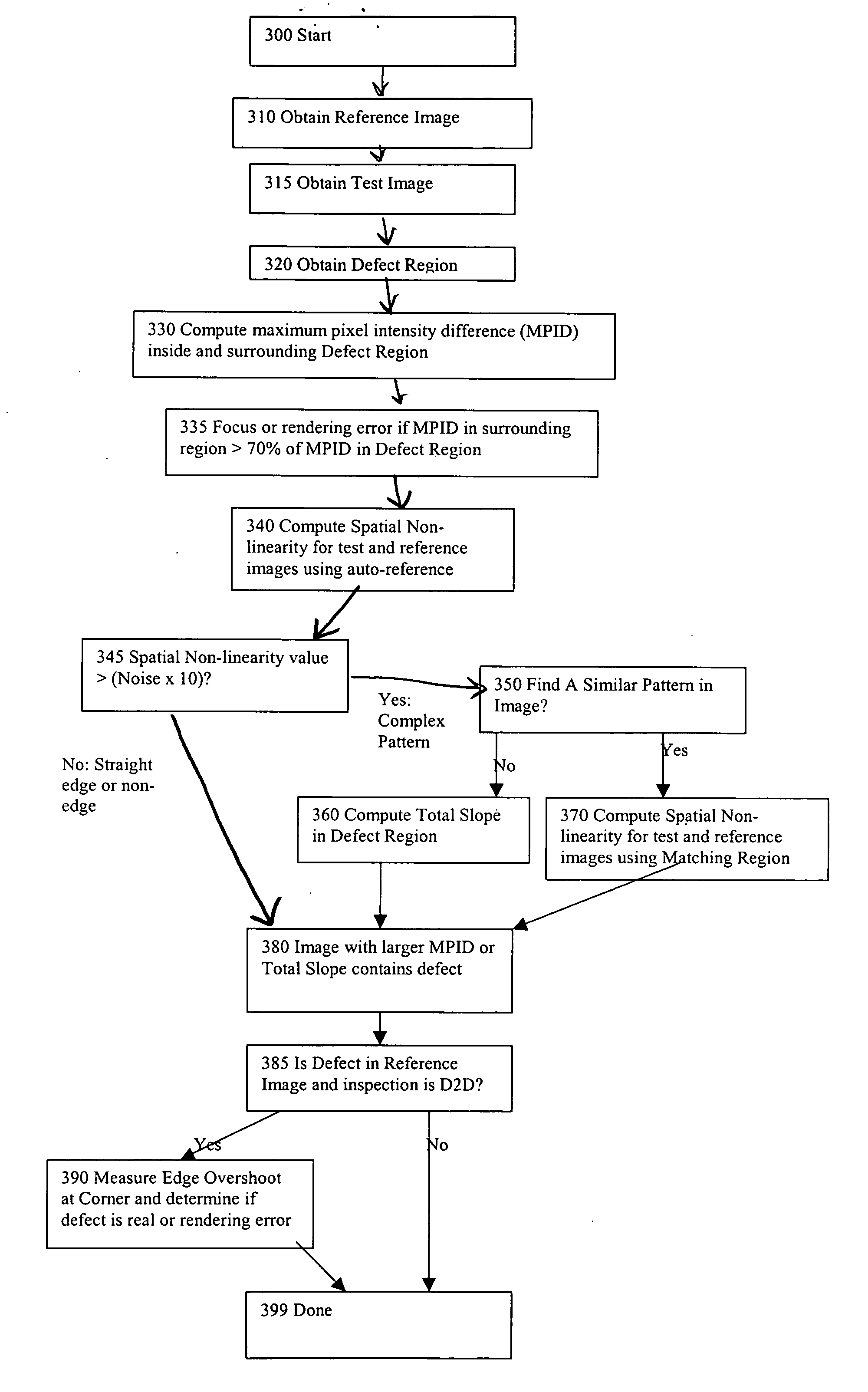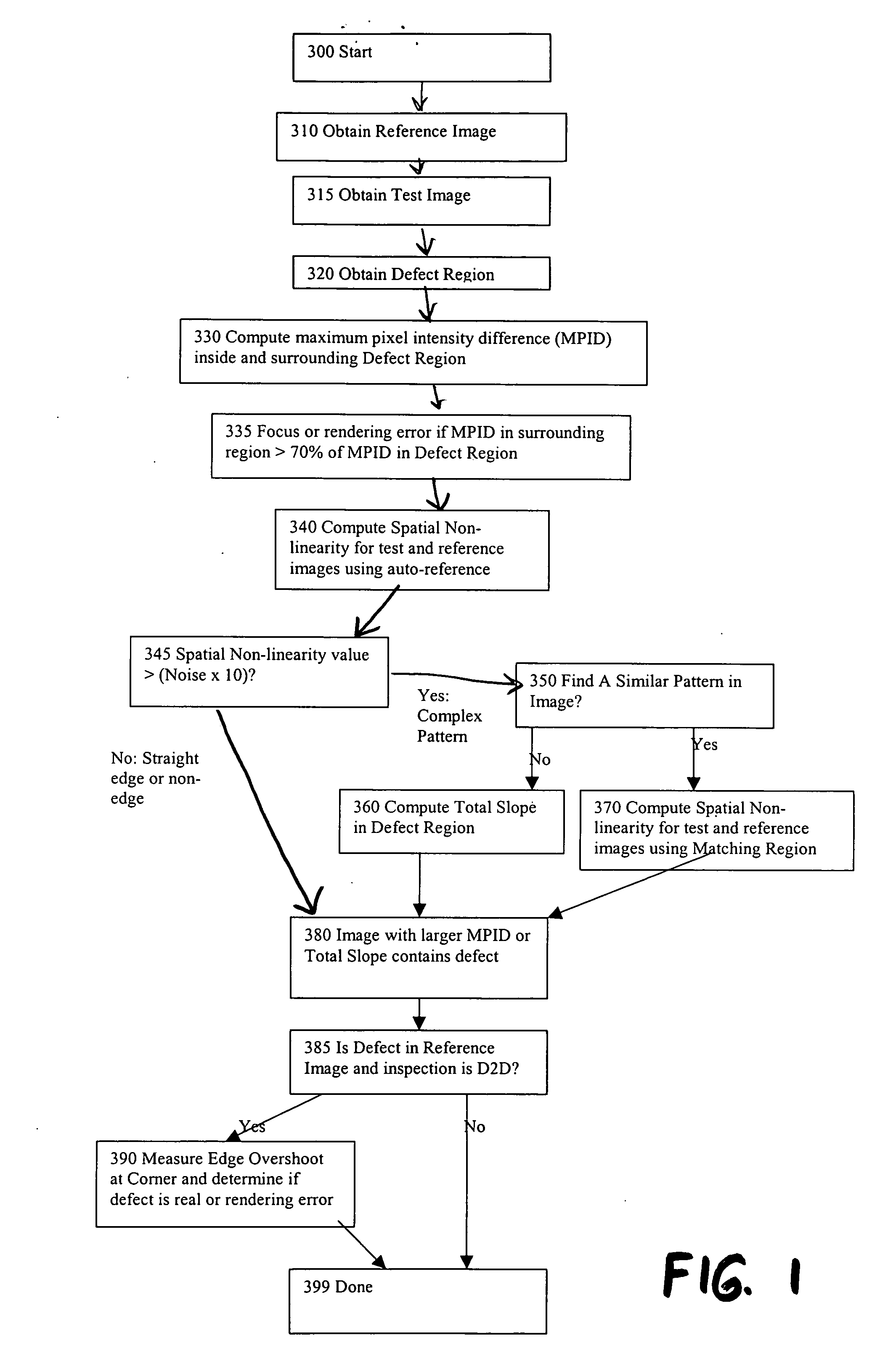Distinguishing reference image errors in optical inspections
- Summary
- Abstract
- Description
- Claims
- Application Information
AI Technical Summary
Benefits of technology
Problems solved by technology
Method used
Image
Examples
Embodiment Construction
[0026]The method begins at 300 by receiving the images into a computer system for analysis. The test and reference images are acquired along with the defect region in steps 310 and 315. The reference image may be obtained in step 310 from any of the sources previously described, namely, 1) an image of a similar structure that is presumed defect free, 2) a computer rendering of the design data for the pattern being inspected, or 3) an alternate imaging method of the actual pattern being inspected. Devices that are used to produce this reference image include the KLA SLF, KLA 5xx, Orbot 8000 and NEC LM7000B inspection tools.
[0027]The test image may be obtained in step 315 from a photomask inspection system, generally the same inspection system that produced the reference image. Both images are typically grayscale and transferred via file from the inspection tool to the image analysis software, such as the software that may embody the steps herein described. Alternatively, the images m...
PUM
 Login to View More
Login to View More Abstract
Description
Claims
Application Information
 Login to View More
Login to View More - R&D
- Intellectual Property
- Life Sciences
- Materials
- Tech Scout
- Unparalleled Data Quality
- Higher Quality Content
- 60% Fewer Hallucinations
Browse by: Latest US Patents, China's latest patents, Technical Efficacy Thesaurus, Application Domain, Technology Topic, Popular Technical Reports.
© 2025 PatSnap. All rights reserved.Legal|Privacy policy|Modern Slavery Act Transparency Statement|Sitemap|About US| Contact US: help@patsnap.com



